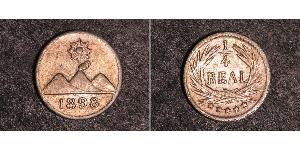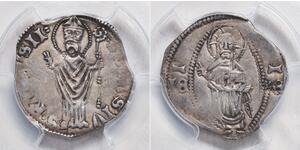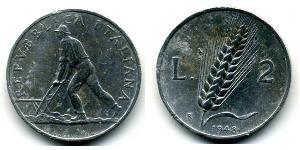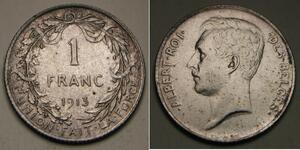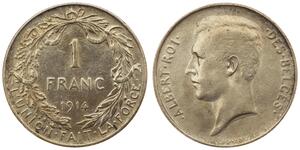[ 5140] ROMAN REPUBLIC MAN. ACILIUS GLABRIO moneyer Silver Denarius (19.5mm ,3.72 gm.) Rome, 49 B.C. Reference: Acilia 8; B.M.C. 3944; Syd. 922; Craw. 442/1a Laureate head of Salus right wearing necklace, SALVTIS upwards behind. MN.ACILIVS III VIR. VALETV, Valetudo (Salus) standing left, leaning against column and holding serpent. This type of Salus and Valetudo are used as the Acilia gens claimed to have introduced the first physician into Rome. Provided with certificate of authenticity. CERTIFIED AUTHENTIC by Sergey Nechayev, PhD - Numismatic Expert Salus (Health) a Goddess of the Romans, the same that was worshipped under the name of Hygiea by the Greeks, who feigned her to be the daughter of Asclepius and of Minerva. On a denarius of the Acilia family appears the head of the goddess and on the reverse a female standing with a serpent in her hand. The types of this divinity on imperial coins most frequently present to view a woman clothed in the stola; sometimes she is sitting, at others standing; in others in a recumbent posture, with a serpent either on her right or her left arm in a quiescent state, rising in folds or entwined round an altar before her, and receiving food from a patera, which she holds in her extended hand. It is in this form (which was doubtless that of her statues and with these symbols) that she is exhibited on most coins on the imperial series from Galba to Maximianus. She had a celebrated temple at Rome, painted, it was said, by Q. Fabius, who thence was surnamed Pictor (the painter) . - There appears to be some affinity between this personification of Salus, when offering food in a patella to a serpent, and the Lanuvian virgin represented in the same act on coins bearing the head of Juno Sospita. - The opinion also has the probability on the face of it, which refers the serpent on coins, where mention is made of Salus Augusti, or Augustorum, to Aesculapius and his daughter Hygaeia (or Salus) as deities of Health. - Certain it is that when those sanitary divinities, and especially when Dea Salus, occur on coins of Emperors, they indicate that those princes were labouring at the time under some diseases; on which account, it would seem, sacred rites had been performed for them and the memorial of the event recorded on public monuments The Roman Republic was the phase of the ancient Roman civilization characterized by a republican form of government. It began with the overthrow of the Roman monarchy, c. 509 BC, and lasted over 450 years until its subversion, through a series of civil wars, into the Principate form of government and the Imperial period. The Roman Republic was governed by a complex constitution, which centered on the principles of a separation of powers and checks and balances. The evolution of the constitution was heavily influenced by the struggle between the aristocracy (the patricians), and other talented Romans who were not from famous families, the plebeians. Early in its history, the republic was controlled by an aristocracy of individuals who could trace their ancestry back to the early history of the kingdom. Over time, the laws that allowed these individuals to dominate the government were repealed, and the result was the emergence of a new aristocracy which depended on the structure of society, rather than the law, to maintain its dominance. During the first two centuries, the Republic saw its territory expand from central Italy to the entire Mediterranean world. In the next century, Rome grew to dominate North Africa, the Iberian Peninsula, Greece, and what is now southern France. During the last two centuries of the Roman Republic, it grew to dominate the rest of modern France, as well as much of the east. At this point, the republican political machinery was replaced with imperialism. Roman Empire is a matter of interpretation. Towards the end of the period a selection of Roman leaders came to so dominate the political arena that they exceeded the limi ...
type to read more

|
Posted by:
anonymous 2015-08-18 |
Similar Coin Groups
2025-05-27
- New coin is added to 1 Franc Belgium Silver
1 Franc Belgium Silver
group has 4 coins / 4 prices
⇑
Belgium - 1 Franc 1914 - Albert I, Silver, French text
2025-05-24
- Historical Coin Prices
You may be interested in ...








